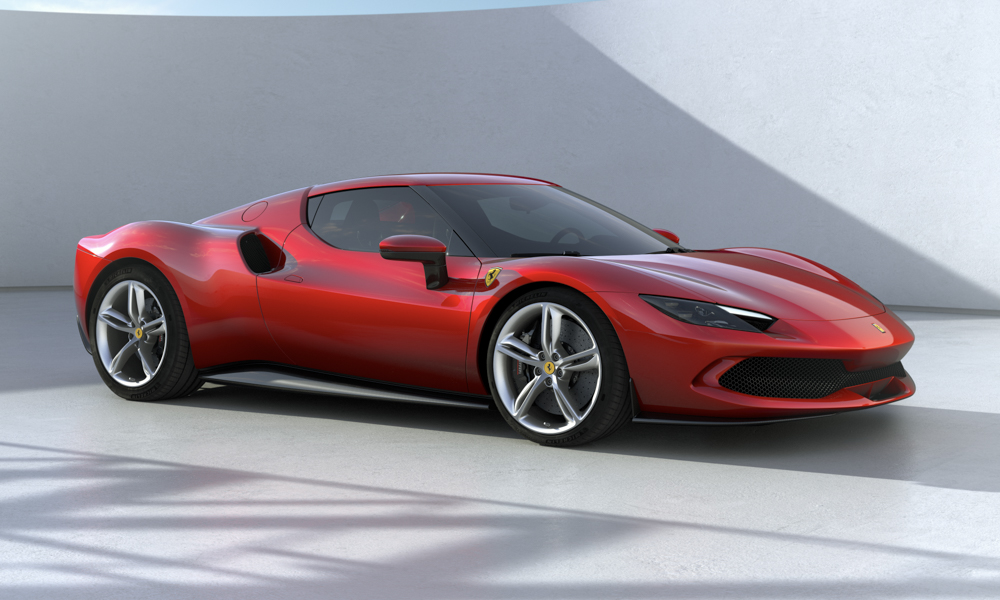
Ferrari once again shows its intent to not just adapt to an electrified future, but make its products thrilling as well. The unveiling of the 296 GTB hybrid supercar is proof that the company still has the ability to surprise us in the best of ways.
The 296 GTB (Gran Turismo Berlinetta) is the first V6 hybrid from the Prancing Horse, and marks another milestone for the Maranello automaker—a vehicle that completes Ferrari’s current portfolio as stated by Enrico Galliera, chief marketing and commercial officer for the marque. In hindsight, Ferrari has had a colorful and successful history with the V6, which started with small-displacement front-mount engines propelling such cars as the 1957 Dino single-seater. This eventually led to the development of larger mid-rear-mount 120° V6s for F1 cars that further solidified Ferrari’s reputation in motorsports.
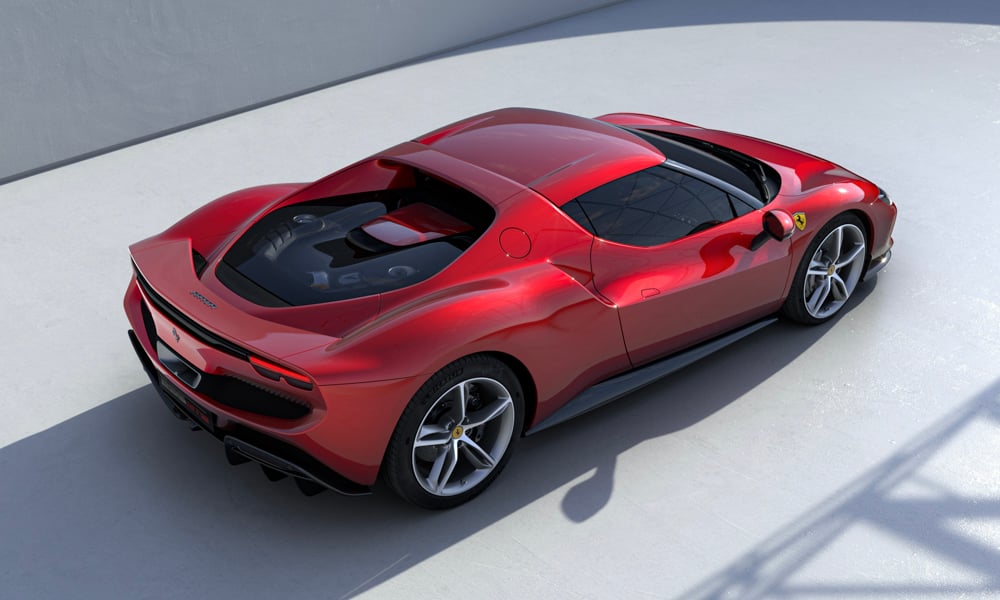
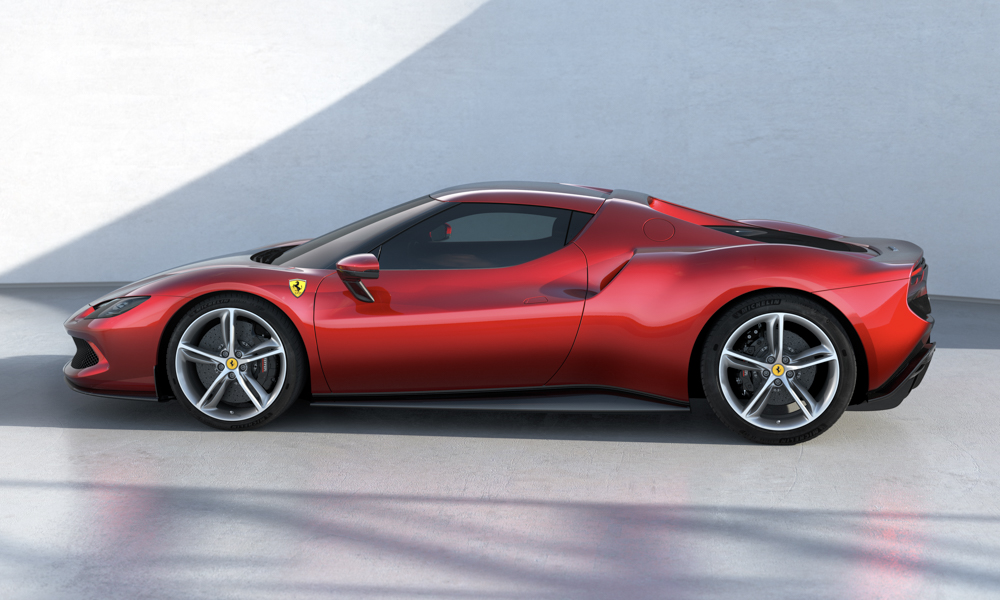
There’s definitely more to the 296 GTB than meets the eye. To state its good looks is just plain obvious. In order to appreciate this supercar, let’s dive right into what makes this a phenomenal creation by looking into key technical aspects.
For one, the 3.0-liter turbocharged V6 plug-in hybrid powerplant is new, with the idea of keeping the center of gravity as low as possible. Engineers achieved this by angling the cylinder banks at 120°, which keeps the weight closer to the ground. The hybrid battery sits beneath the floor to aid in this goal. As a result, the center of gravity is 10mm lower than that of the 296 GTB’s big brother, the SF90 Stradale.
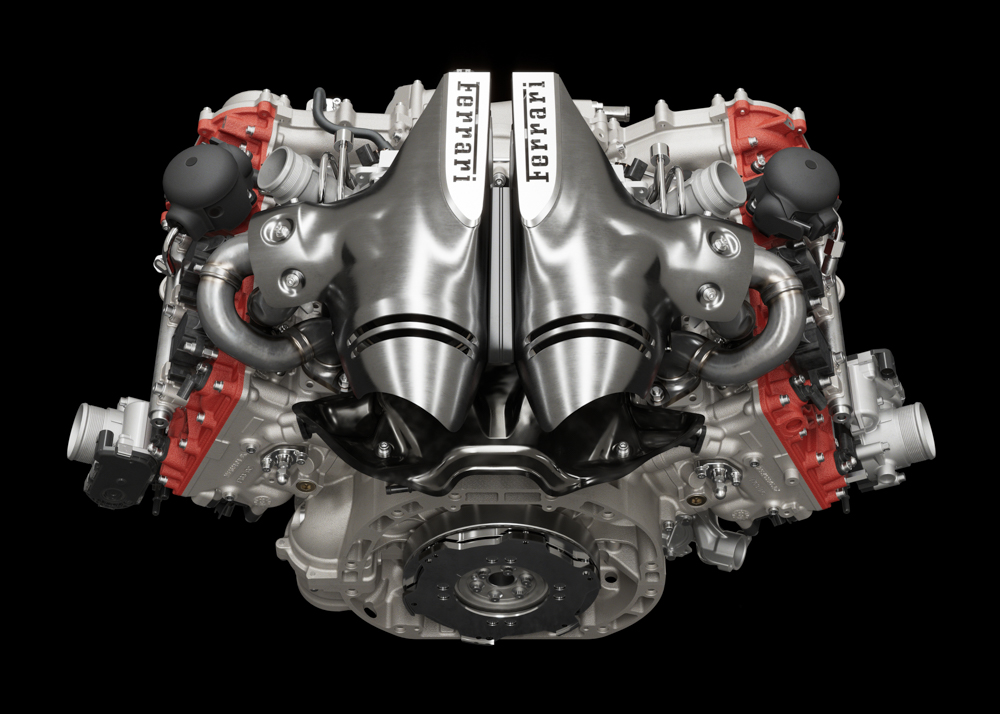
Another remarkable technical point is the 296’s short wheelbase (2,600mm, the shortest in the Ferrari lot). Given the car’s compact nature, chief technology officer Michael Leiters explained that the whole idea was to create a compact sports car with outstanding agility similar to that of a go-kart. This is the first Ferrari road car that incorporates an F1-derived rear-wheel-drive PHEV architecture where the internal-combustion engine is married with the rear-mount electric motor that produces 165hp. Said application inherits the use of a Motor Generator Unit-Kinetic, which reduces the distance between the engine and the eight-speed F1 dual-clutch gearbox, thus allowing for the desired short wheelbase.
Thanks to the larger open space between cylinder banks, the turbos have been situated within that area (another first in Ferrari engine design). This provides better heat management since the hottest components of the powerplant are now centralized within the vehicle’s structure. This leads to the topic of aerodynamics, the challenge of which was creating an ideal union of form and function wherein the vehicle retains its clean, sporty elegance while optimizing downforce and cooling efficiency for the combustion engine, the electronic components, and the braking system.
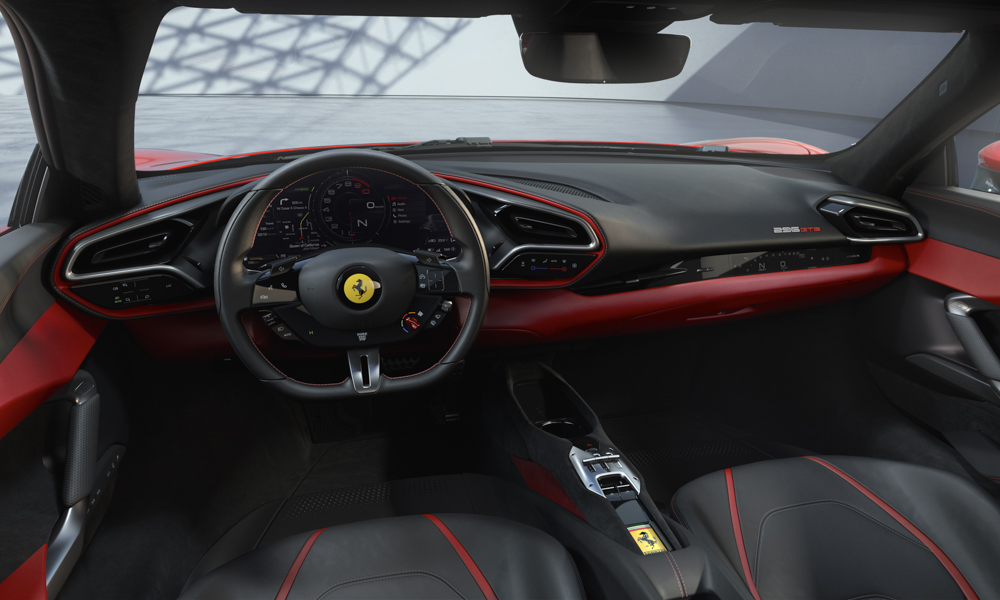
Another first is the usage of active aero to not only manage drag, but also generate more downforce to improve cornering at higher speeds. An active rear-spoiler design derived from the LaFerrari unobtrusively sits between the 296’s beautiful taillights and gives anywhere from 100kg to 350kg of downforce at 250km/h (for the Assetto Fiorano package). Furthermore, ducts below the front lights channel air into the braking system, which also utilizes the same cooling technology found on the SF90 Stradale.
To somewhat simplify the intricate aerodynamic technicalities, hot air is diverted below the car for optimal thermal management, while cool air is harnessed to flow through and over the vehicle to suppress drag, increase downforce, improve cornering/braking dynamics, and dissipate heat immediately. All these are attained while retaining a very fluid, spider-like profile that’s stunning, timeless and purposeful.
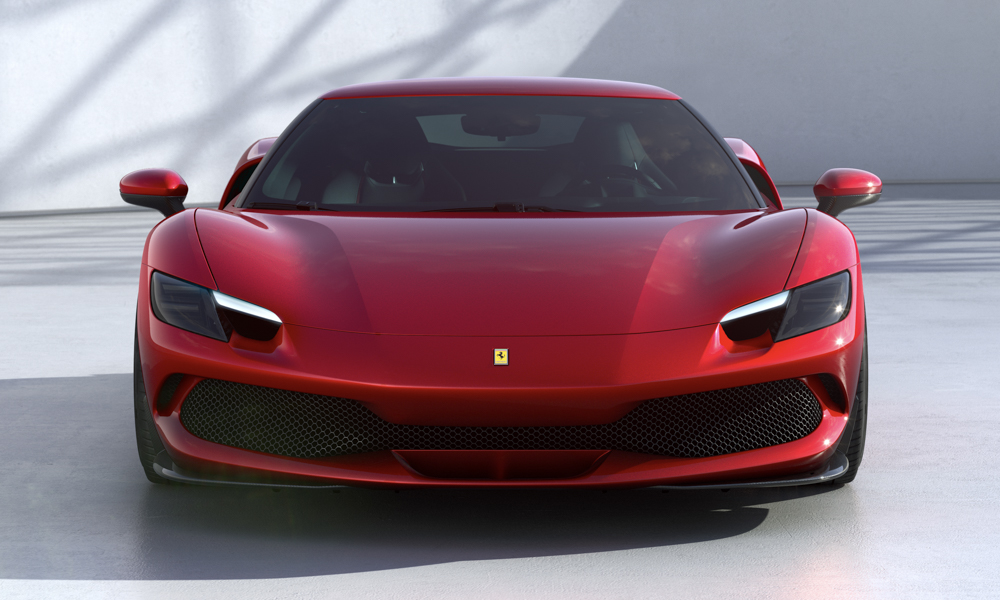
Ultimately, all these features come together to create the fun-to-drive nature of the car. Moreover, the dynamics of the 296 have another first in automobile manufacturing: the presence of a Transition Manager Actuator and a six-way Chassis Dynamic Sensor. These function along with a new ABS evo controller and electronic power steering in delivering an engaging driving experience on both the open road and the track.
Sound is indeed a big part of Ferrari enjoyment. The 296 definitely hits a deeply satisfying exhaust note with a combination of frequencies from the turbos and the exhaust lines from both banks of the V6 block, meeting at a single junction leading toward the trumpet-like center tailpipe.
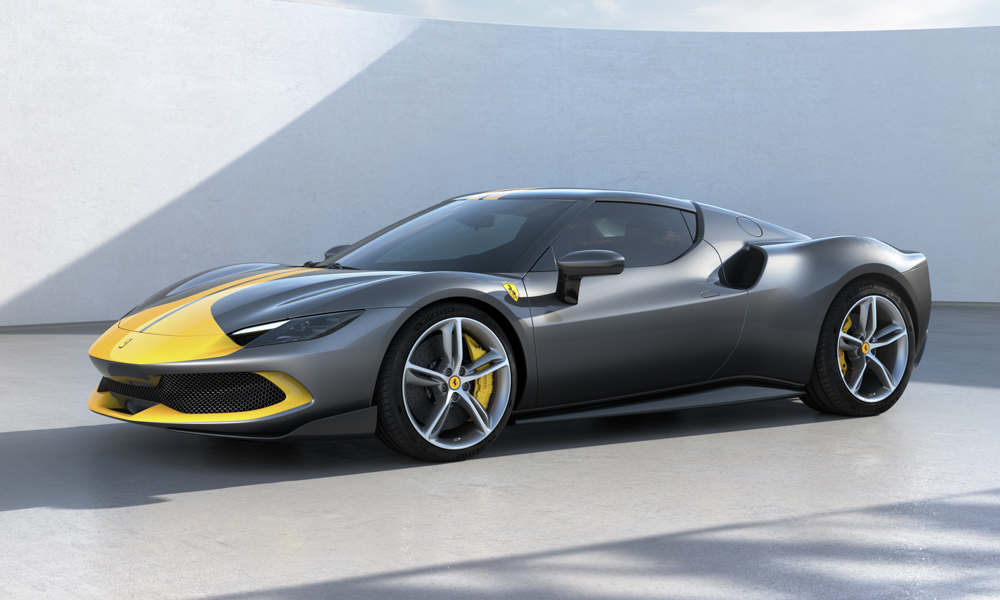
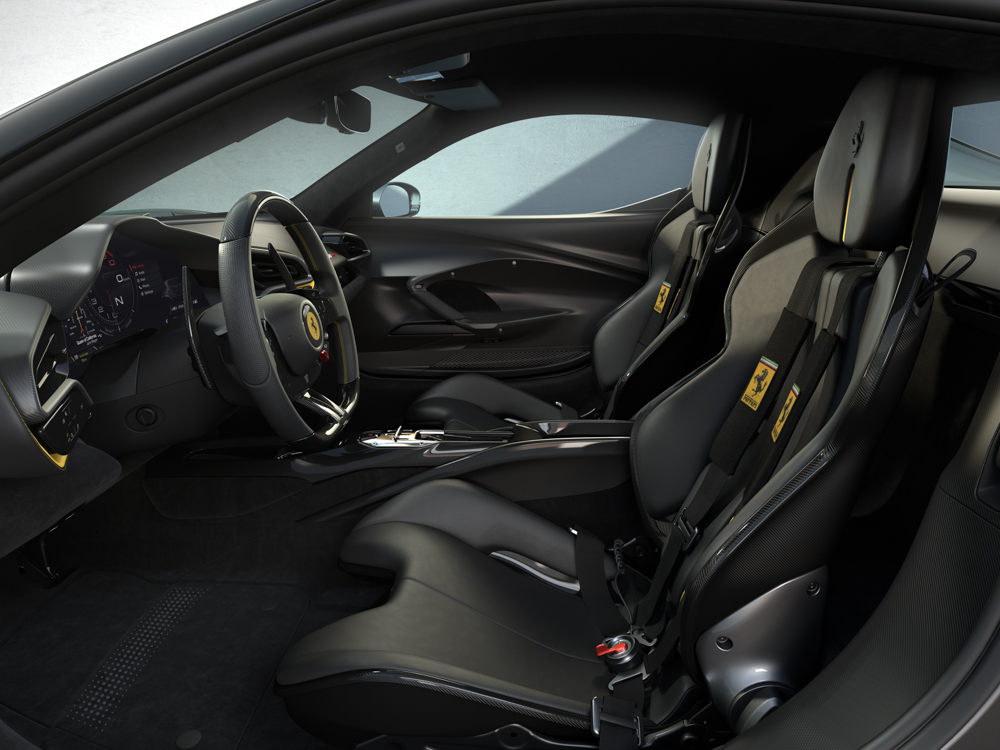
Summing up power and performance, the 296 GTB’s V6 mill (which is 30kg lighter than its V8 counterpart) has set a new record for power output in an internal-combustion engine (218hp per liter of displacement). With a total output of 818hp and 740Nm pushing all 1,470kg of car, the 296 reaches 100km/h in just 2.9 seconds (200km/h in 7.3 seconds). In pure EV mode, this supercar turns into a tree-hugger for a range of 25km. On the Fiorano test circuit, the 296 tore up the course with a lap time of one minute and 21 seconds. Bravo!
Yes, the compact 296 GTB may be a complicated mix of engineering and design elements, but it is certainly a magnificent car of pure performance and beauty. With a price tag starting at €269,000 (P15.58 million), the 296 GTB will surely lure both longtime patrons and new clients. Deliveries will start in early 2022.


0 Comments